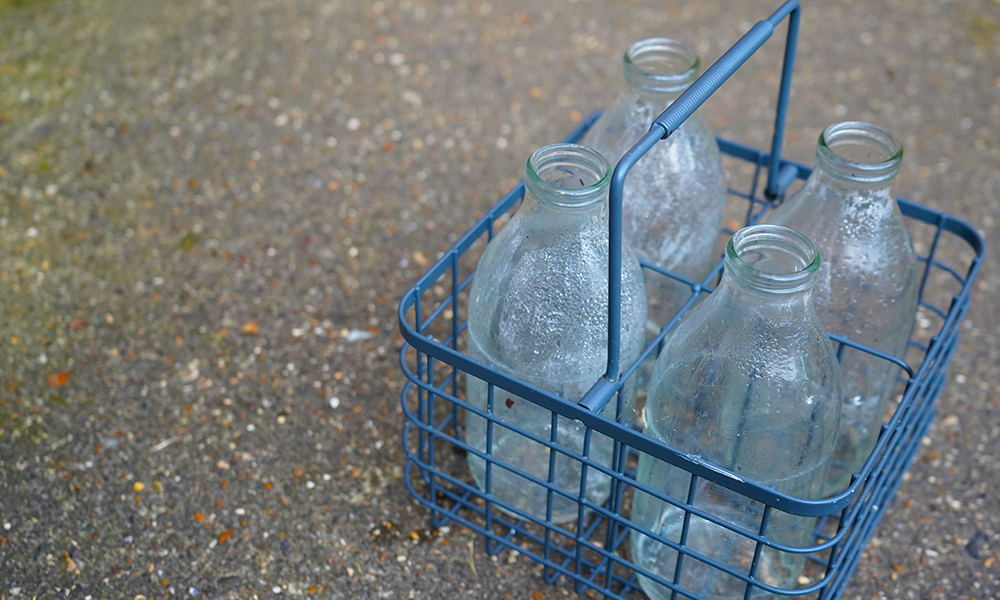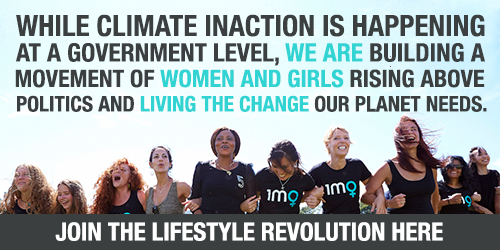Maybe the answer to slowing down global heating is winding the clock back to the sixties, before plastics became popular. Instead of looking for new solutions, maybe we should look back to how our parents and grandparents lived: Before plastic took over our lives and single use plastic waste took over our environment.
Almost 50 years since I passed it off as a silly present from a quirky Aunt, soap-on-a-rope finally makes sense. With my newfound drive to eliminate single use plastic from my house - boosted along by "Plastic Free July" - liquid pump soap is no longer an option. The single use plastic pump packs have been replaced with good old soap dishes ... it seems things have come full circle.
Growing up in the sixties and seventies there was always a cake of Palmolive soap slowly disintegrating on the bathroom sink. So when liquid soap became popular in the 1980s, we all wanted a part of it. No more messy soap, less waste (not true, we have now found out) and more hygienic. We were all convinced this was a change for the better and boring old palmolive got the flick.
When I was looking at my beautiful cake of lavender, cinnamon and sandalwood soap getting a bit messy on my bathroom sink recently, I had my lightbulb moment. Soap-on-a-rope is the answer - no soap dish needed, no mess, zero waste! Apart from the rope and that is compostable!
Looking back to how my parents were brought up in the post war era can teach us so much about how we can live without waste. For many, times were tough and money was scarce so you only bought what you needed. Repairing, reusing and repurposing were not buzz words then, it is just what you did. Meals were cooked from scratch, using up ingredients in the pantry and fridge, before buying more. Broken furniture was fixed, clothes with holes were darned and clothes were handed down through siblings, cousins and neighbours. My mother's button tin was full of buttons of every shape, colour and size at the ready to replace missing ones.
Downstairs under our Queensland house, Dad (who wasn't a particularly handy fellow) had jars of screws and drill bits of varying sizes. Jars of nails and paint tins all carefully marked with their colour and what room they belonged to. He didn't rush off to the hardware store every time he needed something: he checked under the house first and usually found something to do the trick. My Dad was a fastidious man and every Sunday afternoon he would take all his shoes out the back door to the landing and clean and brush and polish every pair ready for the week ahead. Shoes last a lot longer if they are well cared for, protected, cleaned and re-heeled when required.
Soap on a rope isn't the only household item we should have never sent into retirement. Take the biscuit tin, constantly filled with delicious homemade biccies : jam drops, snickerdoodles, cornflake cookies - totally packaging free! Not only were biscuits homemade, but all meals. Takeaways weren't introduced into Australia until the late sixties with the first fast food chain KFC opening in Sydney in 1968, followed by McDonalds in 1972. No takeaways meant no plastic takeaway containers.
There were hardly any cafes in Brisbane in the sixties, so going out for a coffee, let alone a takeaway one in a throwaway cup, just wasn't a thing. Not so fun fact: 500 billion disposable coffee cups are produced globally each year. Australia uses 1 billion of these, and 90% end up in landfill.
Every once and awhile, as a special treat, we had a malted milk in a tin cup with a paper straw at a milk bar. Plastic straws weren't invented back then. Today, in the US alone, 500 million plastic straws are thrown away every day, many of them washing down drains, into the ocean and being mistaken for food by marine animals.
You might be surprised to learn that the concept of bulk stores is not a modern, trendy discovery either. Refilling products was a big trend back then too. Each night empty milk glass bottles were put at the bottom of the front steps for the milko to takeaway and replace with refilled ones in the morning. Soft drinks too came in glass bottles and were delivered, off the back of a ute, once a fortnight.

Fruit and veg were also plastic and packaging free - save a few paper bags for mushrooms and peas. My mum teamed up with 4 other ladies in the street who did a rostered weekly trip to the markets - so you only took a turn every 5 weeks. Produce was brought home in cardboard boxes and divvied up on the kitchen counter between the 5 families. Straight from the box to your fridge or fruit bowl.
My mum's beauty regime consisted of a glass jar of Pond's cold cream. The one jar seemed to last my entire childhood. Think of the hundreds of plastic tubes of make-up, cleansers and moisturisers she just didn't need!
Packed school lunches were plastic free too. Sandwiches wrapped in greaseproof paper put into the lunch box with an apple and homemade treat. Before they invented cling film, we didn't need it.
My mother-in-law, who was one of 11 children, certainly has some tricks up her sleeve when it comes to waste free living. We have never received a present from her that wasn't wrapped in pre-loved wrapping paper and birthday cards were always the front of an old card cut off with writing on the reverse of the picture.
There was no need to find a home for old sheets, towels and tea towels. Sheets were kept downstairs with the paints for drop sheets. Towels and tea towels were repurposed for cleaning and polishing furniture, shoes and cars. We can learn some great waste-free living tips by looking back to the sixties, however we should also take a look around us today. We might have spent the last 50 years creating a throw away society, coming up with crazy ideas such as single use coffee cups and filling our planet up with plastic, but there is hope.
In every country, every day, ordinary people (many are children and teenagers) are taking environmental action and giving us hope. There is hope in a group of parents from my local primary school fundraising to put solar power into the school. There is hope when a local group meets once a month to collect rubbish from our beach. And there is hope when a kindergarten teacher instigates a healthy, waste free lunch challenge with her 4 year olds.
Read this next: How Do Waste Free Period Options Stack Up When Travelling? We Tried Them Out!
By Allison Licence
Allison Licence is a Sydney-based freelance writer and 1 Million Women volunteer who is passionate about the environment and researching ways to live more sustainably.

